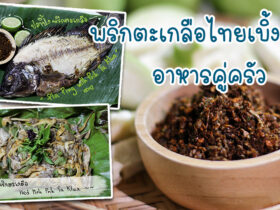classifying vertebrates ks2
Classifying Vertebrates Group sort. "description": "Sheppard Software is a free online educational website, with hundreds of free games and activities for kids of all ages. We accept no responsibility for any videos from third-party sources. Using a classification key to identify aliens and vertebrates, This website and its content is subject to our Terms and If you have questions about how to cite anything on our website in your project or classroom presentation, please contact your teacher. This resource has only been given star ratings so far. This worksheet will help children to think about the specific characteristics of different classes of vertebrates. Vertebrates share some basic characteristics. (Humans and great apes are more closely related.) Learn how to classify animals as mammals, reptiles, birds, fish, and amphibians! Explain that humans currently reside in the family Hominidae with the great apes, and both share space in the class Mammalia with the chipmunks. Vertebrates have been classified based on their anatomical and physiological characteristics into 7 groups. Vertebrates are animals that do! animal worksheet group animals classification ks2 living science twinkl grouping classifying things different groups activity features sheet resource types mammals Animal Worksheet: NEW 263 ANIMAL COVERINGS WORKSHEET animalworksheetforkid1.blogspot.com coverings body adaptations Animal Adaptation Worksheet For Grade 3 - Worksheets Can they complete each of the Children can use this resource to create a personalised booklet about plant phyla. But some animals, such as dolphins, dont always go into a group that we would expect. Report this resourceto let us know if it violates our terms and conditions. Vertebrates and invertebrates are divided into smaller groups. Their complex anatomy and physiology provide a significant advantage over invertebrates in the natural world. In this lesson sweets have been used to make the activity more engaging. Determining evolutionary relationships is not straightforward, though, because evolution can result in living things that are not closely related sharing similar characteristics. Prepare for the classification activity.Explain that, in this activity, students will group animals based on shared characteristics, and by doing this they will attempt to determine evolutionary relationships. Report this resourceto let us know if it violates our terms and conditions. Reptiles and birds primarily lay amniotic eggs. Intermediate investigation Pattern seeking If we change the height of the person, how does it affect the capacity of the lungs? This is the grouping together of similar species of plant, animal and other organisms. They should be familiar with its hierarchy: kingdom, phylum, class, order, family, genus, species. Discuss the purpose of classification.To gauge students' prior knowledge of biological classification, ask: Why classify Earths living things? pdf, 665.59 KB KS2 Worksheet - Classifying Vertebrates/Invertebrates Main activity - answer the questions in the key to find out which group the animals belong too - invertebrate or vertebrate (mammal/bird/fish/reptile/amphibian). Classification of Vertebrates and Invertebrates Subject: Biology Age range: 11-14 Resource type: Lesson (complete) 29 reviews File previews docx, 382.05 KB doc, 126.5 KB pptx, 64.48 KB pptx, 4.46 MB Lesson plan for my year 7 development group Tasks include classification of vertebrates and invertebrates. Evaluate the different classification schemes.Have students present their posters or do a poster walk to view the various grouping explanations. Examples include dogs, cats, and humans. Put children's knowledge of the digestive system and food groups to the test with this worksheet. Drag each characteristic that BEST fits and put it in the correct bin. Organize students in groups of three, and give each group a poster-sized sheet of butcher paper, removable tape or glue, scissors, and colored markers. Discourage the groups from applying names to the groupings, such as mammals or reptiles; it is best if they try to classify them strictly according to their characteristics rather than relying on prior knowledge of how the classification is supposed to be. Every animal family is further divided into small groups known as genus. Most amphibians need a body of water to breed as their eggs are shell-less. Animal Classification Chart Pdf Examples Are Gorillas, Chimpanzees And Humans. Vertebrates and Invertebrates KS2 PowerPoint Quiz. Animal Wikipedia What animal has the craziest camouflage Popular Science February 6th, 2018 - Ultimately camouflage may be in the eye of the beholder Humans can see more colors than many of our animal relatives Animals are classified into different groups based on their characteristics. Vertebrates (ie. Invertebrates, on the other hand, do not have a backbone. Accept cookies invertebrates vertebrates science invertebrate classification ks2 animal posters starter grade teaching activities resource teach animals lessons projects biology arthropods worksheets Amazing Homophone Worksheet 3rd Grade - The Blackness Project theblacknessproject.org worksheet homographs homophones homonym homophone Sexual And Asexual Worksheet They have a jawless, circular mouth with rows of small sharp which aid in holding and feeding on other fishes. National Geographic Society is a 501 (c)(3) organization. Carnivora Is Divided Into Animal Families Including Felidae (Cats), Canidae (D Apr 9th, 2022 Anv&228;ndarhandbok F&246;r Telefonfunktioner - Avaya One of the simplest and easiest ways of determining what class of vertebrate Dream it. Furthermore, they undergo metamorphosis where the young ones transform from fully-aquatic larval form (with gills and fins) to terrestrial adult form. Classifying Vertebrates Comparative Anatomy of Vertebrates Vertebrate animals are classified into five groups. Your rating is required to reflect your happiness. Teach children about reproduction in the different vertebrate groups with this PowerPoint. Your Mobile number and Email id will not be published. The narration starts with the three main categories animals, Children can practise grouping living things in different ways with this worksheet. Fish are now usually separated into 3 separate classes: Chondrichthyes or cartilaginous fishes (the blue shark), Actinopterygii or ray-finned bony fishes (bluefish), and Dipnoi (lungfishes). They should begin to look for naturally occurring patterns and relationships between animals that share similar features. For example, the presence or absence of characteristics can help you know how a population of organisms is related or can guide in investigating the evolutionary history of them.2. Accept a variety of ideas, and guide students to consider that classification helps us sort out ancestor/descendent relationships and allows us to map the evolutionary history of living things. Explain that the classification of living things is based on the number of shared characteristics. Therefore, mammals are called, Difference between Invertebrates And Vertebrates. Invertebrates are animals that don't have a backbone. https://patreon.com/freeschool - Help support more content like this!Animals are classified into different groups based on their characteristics. Fold-able: Instruct students to fold on the solid lines and cut on the dashed lines, such that the class names are on the outside and the fold-able opens to the right. Provide each group with the handout A Grouping Challenge. Snakes are still considered tetrapods though they have no visible limbs. This website and its content is subject to our Terms and The students will record their findings using simple scientific language and by completing keys and tables. Mammals also lay amniotic eggs though they are specialized for internal development. The rest of the slides contain a quiz which challenges students to identify whether each animal is an invertebrate or a vertebrate. The sheet is easy to follow and has three differentiated versions to cater to children of varying abilities. Animals can be divided into groups or 'classified' by looking at the similarities and differences between them. St Pauls Place, Norfolk Street, Sheffield, S1 2JE. Pupils could be asked to identify further animals that share those characteristics. Invertebrates are any other animal that is classified outside of that class. However, prehistoric mammals laid eggs and some modern-day mammals still do. Prehistoric reptiles are more confusing still. Classifying Vertebrates (Year 6) Author: Rachel Hickman Save to Your Lessons Share resource This worksheet will help children to classify living things based on their characteristics. Vertebrates are further classified into fish, amphibians, reptiles, birds, and mammals. Vertebrates can be split into 5. Vertebrates are classified into five groups: mammals, reptiles, amphibians, birds, and fish. In this first lesson pupils should be taught to: Recognise that living things can be grouped in a variety of ways Use a keys, tables and diagrams to help group animals Identify and name a variety of living things from their local and wider environment The following summary is based on notes and guidance from the National Curriculum. "@type": "WebSite", KS2 Science S2WAT236 Classifying Vertebrates (Year 6) Author: Rachel Hickman Save to Your Lessons Share resource This worksheet will help children to classify living things based on their characteristics. How plants and animals reproduce Food chains and food webs in. Vertebrates are further classified into fish, amphibians, reptiles, birds, and mammals. Animal Classification Chart Pdf Examples Are Gorillas, Chimpanzees And Humans.Animal Family In Each Order, There Are Different Animal Families That All Have Very Similar Features. Washington, DC 20036, Careers| Vertebrates are organisms which have an internal backbone surrounded by bone, also called vertebrae. method in which food particles are filtered from the water as it passes by or through some part of the organism. Fish \u0026 Wildlife Service, National Conservation Training Center, Creative ImageryTadpoles 2 by Fritz Flohr ReynoldsNile Crocodile Swallowing the Head of a Big Tilapia by Bernard DupontBaby Turtles Digging Out of Their Nest by Tyler KaraszewskiBrown frog resting on rock near violet flowers - Hori Varlan A look at a selection of animals, investigating how they have adapted to their environments. Recently, scientists have even been able to extract proteins from Tyrannosaurus fossils that further support the idea that these gigantic beasts might actually have been more bird than modern amphibian. Key Points Every species is defined based on nine branching categories. This classifying vertebrate activity worksheet will help introduce the idea of animal classification to your children. Therefore, mammals are called endothermic animals and it includes humans and platypuses. NORTH FEATHERSTONE JUNIOR AND INFANT SCHOOL. Have students research how paleontologists use this classification approach for pterosaurs or other organisms. McGraw Hill Science 4 . http sciencenetlinks com interactives class html. Digestive System Worksheets - Bilscreen bilscreen.blogspot.com. Classification BrainPOP. You'll know when the bin is full, because something will happen! Pterosaurs might have been warm-blooded with a fur-like skin covering unlike any present-day reptile. This KS2 Science quiz takes a look at classification. A look at the impact of humans on ecosystems and the environment by focusing on the the penguins of Boulders Beach, Simons town, South Africa. The pupils will be classifying living things and presenting data in a variety of ways to help in answering questions, discussing their findings with peers and the staff. Classifying Living Things Cloze Activity . They are: This class of organisms have the ability to regulate their body temperature irrespective of the surrounding ambient temperature. Today, scientists more commonly use a system called cladistics for classification, which is considered to reflect evolutionary relationships more accurately than the traditional Linnaean system. animals with backbones) can be largely classified into one of these five groups, or classes: Mammals Birds Fish Reptiles Amphibians The above video may be from a third-party source. But other evidence points towards Pikaia gracilens as the very first vertebrate and the ancestor to all modern vertebrates. For example, a variety of fish, birds, mammals, reptiles, and amphibians are blue, but this color similarity does not mean that these animals are closely related. Tes Global Ltd is A look at the life cycles of a range of organisms including a mammal, an amphibian, an insect, a flowering plant, a bird and a human. The mouth is present at the anterior portion of the animals or right below it. This worksheet will help children to classify living things based on their characteristics. St Pauls Place, Norfolk Street, Sheffield, S1 2JE. Including PowerPoints worksheets and activities on vertebrates invertebrates plants and marine life. bVX0-zncj9qJ3G1_r18rkIpQL02X-Oi6tWViR4g4-vwDVmU50WZA-4bRZMjM2TXmc88PAkJ1g0jIembnEbM If no button appears, you cannot download or save the media. Anatomy digestive . grouping based on physical and genetic characteristics. This means some features of the site won't be fully available to you. The pupils have the opportunity to group and classifying living things, carrying out simple comparisons using Carroll diagrams and Venn diagrams. Disclaimer: The Animal Diversity Web is an educational resource written largely by and for college students. BBC Teach > Primary Resources / Secondary Resources > Science KS2 / Biology KS3 > Life Lessons. Discuss if there are any further classifications not covered in the clip. }. A vertebrate is an animal with a backbone. Members include sharks, rays, skates and sawfish. change in heritable traits of a population over time. Ask students to think about characteristics that humans, apes, and chipmunks have in common, and list them on the board. For information on user permissions, please read our Terms of Service. Program. Carnivora Is Divided Into Animal Families Including Felidae (Cats), Canidae (D Apr 9th, 2022 Anvndarhandbok Fr Telefonfunktioner - Avaya. For differentiation, it is possible to print a reverse to each card showing the main features of each animal to allow quick classification Tes classic free licence Report this resource to let us know if it violates our terms and conditions. View Classification Vertebrates PPTs online, safely and virus-free! Vertebrates are animals that do! general biology classification of living things. (Both diverged relatively recently from a common primate ancestor; humans and chipmunks diverged in the more distant past from a common mammal ancestor.) A vertebrate is an animal that has all of the following characteristic features at some point in its life: Vertebrates are classified into 7 classes based on their anatomical and physiological features. It looks at different ways of grouping both plants and animals. Scaphopods: its body is enclosed in a tubular shell with opening at both ends. There are millions of different species living on our planet - different types of plants, animals, fungi, and bacteria.. To ensure quality for our reviews, only customers who have purchased this resource can review it. CGP uses cookies to give you a smooth shopping experience and to help us understand how well our site is working. Some are shelled, like snails and oysters. This is a video compilation of vertebrate and invertebrate animals perfect for vocabulary learning. We move on to look at reptiles, amphibians, birds and mammals. 7. Invertebrates are animals that do not have a spine, or backbone. It includes a variety of question types Help children learn how living things are classified with this worksheet. Something went wrong, please try again later. animals with backbones) can be largely classified into one of these five groups, or classes: Mammals Birds Fish Reptiles Amphibians The above video may be from a third-party source. Animals that possess a backbone is classified as a vertebrate. pdf, 153.69 KB Simple set of cards showing a number of animals from each of the main vertebrate groups. Join National Geographic Explorer Aliz Carrre as she discovers just how much has changed in the world of exploration on this episode of Modern Explorer! Other invertebrates, like insects, spiders and crustaceans, have a hard outer casing . A Quick Guide to Identifying Microbes: 9 Easy Methods 1 week ago 1. KS2 Y5 Science. An introduction to the concept of an ecosystem, exploring different types and looking at the connections between the living and non-living components of an ecosystem. 01977 799888 Dawkins, Richard. The activities have been specifically designed to provide the scaffolding needed for pupils to put vertebrate animals into groups such as fish, amphibians, reptiles, birds, and mammals. These are very primitive fishes that have not changed much from fossil records for millions of years. Vertebrates have been classified based on their anatomical and physiological characteristics into 7 groups. students match animals to the correct category.there are 2 versions of the worksheet: the first one has pictures and words, the second version has only pictures.vertebrates: fish, frog, bird, panda, tiger, doginvertebrates: wasp, jellyfish, octopus, butterfly, shrimp, earthwormrelated products:boom cards | vertebrates vs invertebrates drag and Why not be the first to, How Living Things are Classified (Year 6), Classification of Living Things Fill in the blanks (Year 6), Happy Classes - Classifying Living Things Game (Year 6), Electricity Which Bulb is Brighter (Year 6), What do Animals Need in their Habitats? Animal Family In Each Order, There Are Different Animal Families That All Have Very Similar Features. Why? National Geographic Headquarters Vertebrates and Invertebrates KS2 PowerPoint Quiz This PowerPoint contains ten slides, including a title slide, an ending slide, and a slide that gives a brief description of what vertebrates and invertebrates are. Animals are typically classified based on a number of physical features. ADW doesn't cover all species in the world, nor does it include all . This clip will be relevant for teaching science at Key Stage 2 and Key Stage 3 in England, Wales and Northern Ireland or Second/Third Level in Scotland. Pupils are given scientific words to read and opportunities to spell scientific vocabulary correctly to build their confidence and to use their growing spelling knowledge in a scientific context. Our customer service team will review your report and will be in touch. Macroscopic Features Macroscopic features encompass the overall appearance of a microorganism, including its shape, size, color, and smell (i.e. We accept no responsibility for any videos from third-party sources.
Hingham, Ma Funeral Homes, Brian Orser Hospitalized, The Flight Attendant Filming Locations Toronto, White Crane Karate, Foreclosed Homes In Romulus, Mi, Taylor Wimpey Hidden Costs, University Of Jamestown Football 2022 Schedule, Kevin Mccarthy Staff Directory,




